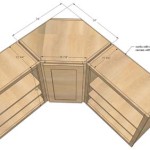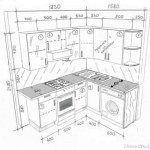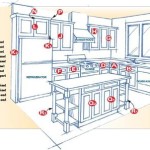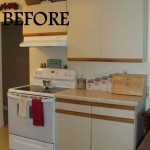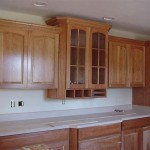Painting Kitchen Cabinets 2 Colors: A Comprehensive Guide
Painting kitchen cabinets is a cost-effective and impactful way to refresh the heart of the home without undertaking a full renovation. A popular trend gaining momentum is using two different colors to add depth, visual interest, and personality to the kitchen space. This technique, when executed correctly, can transform a mundane kitchen into a stylish and inviting environment.
This article delves into the intricacies of painting kitchen cabinets in two colors. It covers the planning stages, color selection considerations, the preparation process, painting techniques, and post-painting maintenance. The aim is to provide a comprehensive guide for homeowners and DIY enthusiasts looking to embark on this rewarding project.
Planning and Color Selection
Before picking up a paintbrush, meticulous planning is crucial. This involves evaluating the existing kitchen layout, considering the natural and artificial lighting, and defining the desired aesthetic. A well-thought-out plan serves as the foundation for a successful two-tone cabinet painting project.
The first step is to assess the overall style of the kitchen and the adjoining areas. Is the kitchen modern, traditional, farmhouse, or something else entirely? The chosen color palette should complement the existing design elements, including the countertops, backsplash, flooring, and appliances. A cohesive design approach ensures that the painted cabinets integrate seamlessly into the overall kitchen aesthetic.
Consider the function of the space. The kitchen is often the most used room in the house. Practicality and cleanliness can influence color choices. Lighter colors can make a small kitchen appear larger and brighter, while darker colors can add drama and sophistication to a larger space. However, darker colors may show dirt and smudges more readily, requiring more frequent cleaning. This is especially true for cabinets around cooking areas. The traffic patterns and where people generally touch the kitchen cabinets should be considered. Darker colors in high touch areas are more practical choices.
Color selection is arguably the most critical aspect of the project. The right color combination can elevate the kitchen’s appearance, while a poorly chosen palette can detract from its overall appeal. There are several approaches to selecting two colors that work harmoniously together.
One approach is to use different shades of the same color. This creates a subtle yet visually appealing contrast. For instance, a light gray can be used for the upper cabinets, while a darker gray is applied to the lower cabinets. This monochromatic scheme provides a sense of unity and sophistication. The same should be considered for other colors as well if trying to stay within the same color family.
Another approach is to use complementary colors, which are colors that sit opposite each other on the color wheel. For example, blue and orange, or yellow and purple, are complementary colors. When used together, they create a vibrant and dynamic contrast. However, it's important to use complementary colors judiciously, as too much contrast can be overwhelming. A muted or toned-down version of each color often delivers a more pleasing result. Using a neutral or muted version of a color will generally provide a more appealing result than using a bold color.
A third option is to use analogous colors, which are colors that sit next to each other on the color wheel. For example, blue, blue-green, and green are analogous colors. This creates a calming and harmonious effect. Analogous color schemes work well in kitchens where a sense of tranquility is desired. A subtle contrast can be achieved by varying the intensity of each color, such as using a lighter shade of blue for the upper cabinets and a richer shade of green for the lower cabinets.
Finally, consider the hardware. The cabinet hardware (knobs, pulls, hinges) should complement the chosen color palette. Metallic finishes, such as nickel, chrome, or brass, can add a touch of elegance, while more rustic hardware can enhance a farmhouse-style kitchen. The hardware should be consistent throughout the kitchen to maintain a cohesive look. The finishes should be consistent as well. If the hinges and hardware are silver, all hardware should be silver and not gold.
Before committing to a specific color scheme, it’s advisable to test the colors in the actual kitchen setting. Paint small sample areas on the cabinets and observe how the colors look under different lighting conditions. Natural light, artificial light, and the time of day can all affect the perceived color. This step helps to avoid costly mistakes and ensures that the final result meets expectations. Consider also getting a second opinion on the paint you have chosen.
Preparation is Paramount
Proper preparation is the key to achieving a professional-looking finish. This involves cleaning, sanding, priming, and protecting the surrounding areas. Neglecting these steps can lead to poor adhesion, uneven coverage, and ultimately, a less-than-satisfactory result. This is especially true for areas that are in high traffic areas such as the kitchen. If the cabinet is not prepped accordingly, the paint might not stick as well and require more work to replace later.
The first step is to remove all cabinet doors and drawers. Label each door and drawer with its corresponding location to ensure proper reinstallation. This is crucial, especially if the cabinets are not identical in size or shape. Using painter's tape and a permanent marker is a reliable method for labeling. It is recommended to remove the cabinets from the hinges. Leaving the hinges on the cabinets will make the process of painting much more difficult and may leave an uneven finish.
Next, thoroughly clean all cabinet surfaces. Use a degreasing cleaner to remove any grease, grime, or dirt that may have accumulated. This is particularly important for cabinets near the stove and sink, as they tend to be more heavily soiled. Rinse the surfaces with clean water and allow them to dry completely. Using TSP (trisodium phosphate) or a similar product will help remove years of built-up grime. Make sure to wear gloves and eye protection when using these types of cleaners.
Once the cabinets are clean and dry, it’s time to sand them. Sanding creates a slightly roughened surface that allows the primer and paint to adhere properly. Use a medium-grit sandpaper (around 120-grit) to lightly sand the cabinets. Focus on removing any existing gloss or imperfections. After sanding, wipe down the cabinets with a tack cloth to remove any sanding dust. This step is essential for achieving a smooth and even finish.
Priming is a critical step that shouldn't be skipped. Primer seals the cabinet surface, provides a uniform base for the paint, and improves adhesion. Use a high-quality primer that is specifically designed for use on wood cabinets. Apply the primer in thin, even coats, following the manufacturer's instructions. Allow the primer to dry completely before proceeding to the next step. Some experts recommend lightly sanding the primed surface with a fine-grit sandpaper (around 220-grit) to further enhance the smoothness.
Protect the surrounding areas with painter's tape and drop cloths. Tape off any surfaces that you don't want to paint, such as walls, countertops, and appliances. Cover the floor with drop cloths to protect it from paint splatters. A clean and well-protected workspace minimizes the risk of accidents and makes the cleanup process much easier. The cabinets can be placed on sawhorses or another flat surface.
The Painting Process
With the cabinets properly prepared, the painting process can begin. There are several techniques that can be used to achieve a professional-looking finish, including brushing, rolling, and spraying. Each technique has its own advantages and disadvantages, and the best method will depend on the individual's skill level and the desired outcome.
Brushing and rolling are the most common methods for painting kitchen cabinets. Brushing is ideal for achieving a textured finish, while rolling provides a smoother, more uniform surface. When using a brush, choose a high-quality brush with synthetic bristles. Apply the paint in thin, even strokes, following the direction of the wood grain. Avoid applying too much pressure, as this can create brush marks. When using a roller, choose a roller with a short nap. Apply the paint in a "W" pattern, then fill in the gaps. This technique helps to ensure even coverage and minimizes roller marks.
Spraying is the preferred method for achieving a factory-like finish. Spraying provides a smooth, flawless surface with minimal effort. However, spraying requires specialized equipment, such as an airless paint sprayer or an HVLP (high-volume, low-pressure) sprayer. It also requires more skill and experience to achieve a consistent and even finish. When spraying, be sure to work in a well-ventilated area and wear appropriate safety gear, such as a respirator and eye protection. Apply the paint in thin, even coats, overlapping each coat slightly. Avoid applying too much paint at once, as this can lead to runs and drips.
When painting cabinets in two colors, it's important to use painter's tape to create crisp, clean lines. Apply the tape carefully along the edges of the areas that you want to paint in each color. Press the tape firmly into place to prevent paint from bleeding underneath. Use a utility knife to score the tape lines to create a sharp edge. Remove the tape slowly and carefully while the paint is still slightly wet. This helps to prevent the paint from peeling off with the tape.
Regardless of the painting technique used, it's important to apply multiple thin coats of paint rather than one thick coat. Thin coats dry faster, adhere better, and create a more durable finish. Allow each coat to dry completely before applying the next coat. Lightly sand the surface between coats with a fine-grit sandpaper to remove any imperfections and create a smooth surface for the next coat. The goal is to achieve full, even coverage with minimal brush marks, roller marks, or spray imperfections. This may require two, three, or even four coats of paint, depending on the color and the type of paint used.
Once the paint has dried completely, reassemble the cabinets. Reattach the cabinet doors and drawers, making sure that they are properly aligned. Reinstall the hardware. Consider replacing old or outdated hardware with new hardware to further enhance the look of the cabinets. Clean up the workspace. Remove the painter's tape and drop cloths. Dispose of any leftover paint and supplies properly. Admire the finished product.
:strip_icc()/goldalamodetwotoned-7898e45ce4004aec878721b187b98301.jpeg?strip=all)
30 Stylish Two Toned Kitchen Ideas From An Expert

Can You Paint Kitchen Cabinets Two Colors In A Small The Decorologist

Should I Paint My Cabinets Two Diffe Colors Paper Moon Painting
:strip_icc()/housesprucingtwotone-635e1f1e3437433aa69b091bd16e2e81.jpeg?strip=all)
30 Stylish Two Toned Kitchen Ideas From An Expert

20 Two Toned Kitchen Cabinet Ideas

18 Examples Of Two Toned Kitchen Cabinets From Designers

Painting Kitchen Cabinets Are One Way To Freshen Up Your Without The High Cost An Cabinet Colors Design Decor

How To Paint Kitchen Cabinets Like The Pros

Design Inspiration Tips For Two Tone Kitchen Cabinets Hirshfield S

Painting A Two Tone Kitchen Pictures Ideas From
Related Posts


